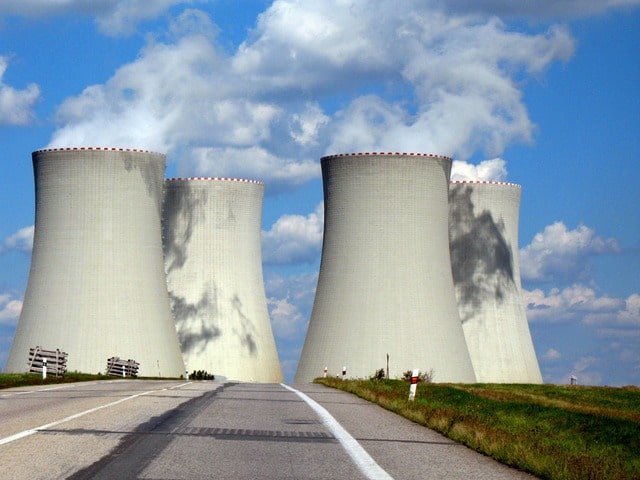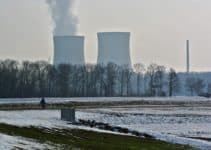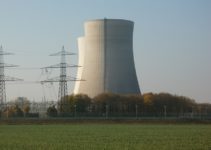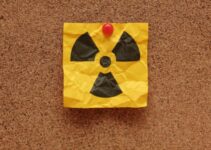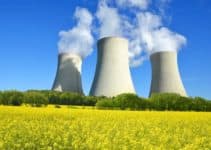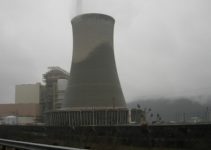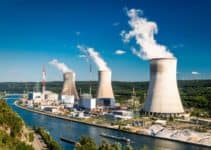Since the start of the industrial revolution, the demand for energy has accelerated each passing year. Today, most of this energy demand is satisfied by the use of fossil fuels. The devastating events at Chernobyl, Fukushima and Three Mile Island have diluted some of the enthusiasm that once surrounded nuclear energy. Due to the skyrocketing costs and negative effects on the environment instigated by fossil fuels, experts are working around the clock to minimize over-dependence upon them. While renewable sources of energy such as wind, solar and hydropower have demonstrated to be ideal alternatives, they are still far from satisfying human needs. Nuclear, on the flip side, has every technology needed to be utilized on a massive scale. Despite this, there is still a great degree of fear and misconception revolving around nuclear energy.
By definition, nuclear energy is energy held at the nucleus of an atom. The energy can be harnessed using two kinds of reactions; fission and fusion. Atoms are small particles in the molecules that constitute solids, liquids, and gasses. The atom itself is composed of 3 particles known as neutrons, protons, and electrons. An atom consists of a core (nucleus) that contains protons and neutrons. Protons harbor a positive electrical charge, while electrons harbor a negative electrical charge. Neutrons, on the other hand, have no electrical charge. The bonds that bind the nucleus together contains huge amount of energy. When these bonds are broken, the nuclear energy is released. The process of breaking down these bonds to release energy is known as nuclear fission. The energy can be harvested to generate electricity.
In the process of nuclear fission, atoms are split. The splitting of atoms releases vast amount of energy. All nuclear power plants across the world utilize nuclear fission to produce energy, and a majority of nuclear power plants utilize uranium atoms as a source of fuel. In the course of nuclear fission, a neutron collides with a uranium atom causing it to split. The result is a greater quantity of energy in the form of radiation and heat. When a uranium atom splits, lots of neutrons are also released. The released neutrons go on to collide with other uranium atoms, and the cycle continues. This process is known as nuclear chain reaction. This reaction is highly controlled in the reactor of the nuclear power plant to generate the required amount of heat.
Nuclear fusion is another way in which nuclear energy can be released. In nuclear fusion, atoms are synchronized or blended to achieve a larger atom. This represents the energy source in the sun and stars. Although nuclear fusion can be used to generate energy, it’s still undergoing research as a viable source of heat and electricity. However, the possibility that it would be ideal source of energy for commercial use is not clear. This is due to the challenges of controlling a fusion reaction.
How Nuclear Energy Works?
Electricity through nuclear energy is produced in the same way as it we do it by burning coal, oil or natural gas. When burnt, the heat formed produces steam. The steam then turns turbines. The turbines turns generators which produce electricity. The difference between the plants that use coal and the plants that use uranium as fuel is that here we don’t burn anything. In fact, here bundles of radioactive element uranium rods are placed into the reactor.
The uranium rods are nothing but small vertical ceramic pellets that are packaged into long, vertical tubes. Nuclear fission process takes place inside the reactor causing individual atoms to split by shooting neutrons at them. The uranium nuclei split and release energy in the form of heat. The released neutrons then split further uranium nuclei.
As we have seen, uranium is the fuel used in the production of nuclear energy. Uranium is classified as a non-renewable energy resource, although it’s well-known metal mined from rocks across the world.
- Splitting of atoms
The whole process of nuclear energy generation starts with splitting of atoms. Uranium atoms, which come in the form of ceramic-coated pellets, are incorporated into the core of the reactor. The result is a chain reaction in the core, which leads to the splitting of the atoms. Naturally, uranium is an unstable element. So by causing it to split, it transforms to become a stable element. This process results in the production of radiation and heat.
- Absorption of free floating neutrons
During the process of nuclear fission, neutrons are released and float freely inside the core. The free floating neutrons are absorbed using control rods. Trivalent metalloid element called Baron that is released into the cooling water also assists in the absorption of these free floating neutrons. This helps to control the radiation and maintain the reactor safe and cool.
- Heating process
The radiation and heat generated during the fission process start to heat the water. The water is, essentially, the coolant surrounding the reactor. The surrounding water performs 2 functions; it prevents overheating of the reactor and transports the steam and heat to be used to spin the turbines.
- Water and piping
The water that serves as a coolant is constantly flowing around and through the reactor. Two different pipes are installed to transport this water in and out of the pressurized chamber. The first pipe (primary pipe) is responsible for supplying fresh and cold water to the tank. The second pipe (secondary pipe) transports the hot water and steam to spin the turbines. The moment the secondary pipes have transported the water from the chamber, which mitigates the boiling of water, the heated water can boil and vaporize into steam and spin the turbines. The two sets of pipes are designed in such a way that they cannot come into contact with each other. This is to ensure the temperature in the chamber remains balanced and to regulate the production of heat and steam by the reactor.
Uses of Nuclear Energy
Most people think that nuclear energy is only used for destructive purposes. But it has way more positive uses than negative.
- Generation of electricity
Production of nuclear power has a lot in common with other power plants. The difference is that nuclear energy is utilized in the production of steam that is directed to spin turbines that trigger a generator to produce electricity.
- Used in agriculture
Advances in nuclear energy technologies have aided in the production of disease and insect resistant seeds. This has led to improved crop yields. Radiation from nuclear has, for a long time, helped in the preservation of food supplies such as fruits and vegetables. Nuclear technology has also helped scientists in the analysis of soil type, and this information has helped in increasing the quality of soil.
- Nuclear medicine test
Nuclear technology is particularly used in isotope scanning (radioisotope scan). Radioisotope scan utilizes a small amount of radioactivity to generate pictures on special cameras. The radioactive dose is normally administered by injecting into the patient’s vein through the hand or arm.
Also, nuclear radiations are used in the treatment of cancer, a process known as radiotherapy. Affected cells are exterminated by being subjected to radiation.
- Manufacture of atomic bomb
The past years have witnessed proliferation of nuclear bombs. These bombs are capable of destroying an entire city by generating shock waves, radiation and heat as a result of fission. However, the atomic bomb has been utilized only twice in warfare; the Hiroshima and Nagasaki bombings that resulted in thousands of deaths and massive destruction of property and infrastructure.
- Identification of water resources
Water is essential for life, yet in most parts of the globe, there is little supply or scarcity of freshwater. Isotope hydrology techniques help scientists to accurately track and measure the degree of underground water resources. These innovative technologies offer vital analytical tools for efficient management and conservation of present water supplies and detection of new and renewable water sources. These tools also offer vital answers to questions revolving around origin, age and distribution of ground water. Additionally, they assist in determining the interconnections between surface and ground water. The outcomes allow informed planning and efficient management of water resources.
Although nuclear energy accounts for 15% of electricity generated globally, it comes with a host of advantages including clean energy, high quantities, high reserves, reliability, low operating cost, low waste and a cheaper alternative. The initial cost of nuclear energy plant may be extremely high and may take years to complete, but the population will be sure of reliable and cheap electricity for decades.
